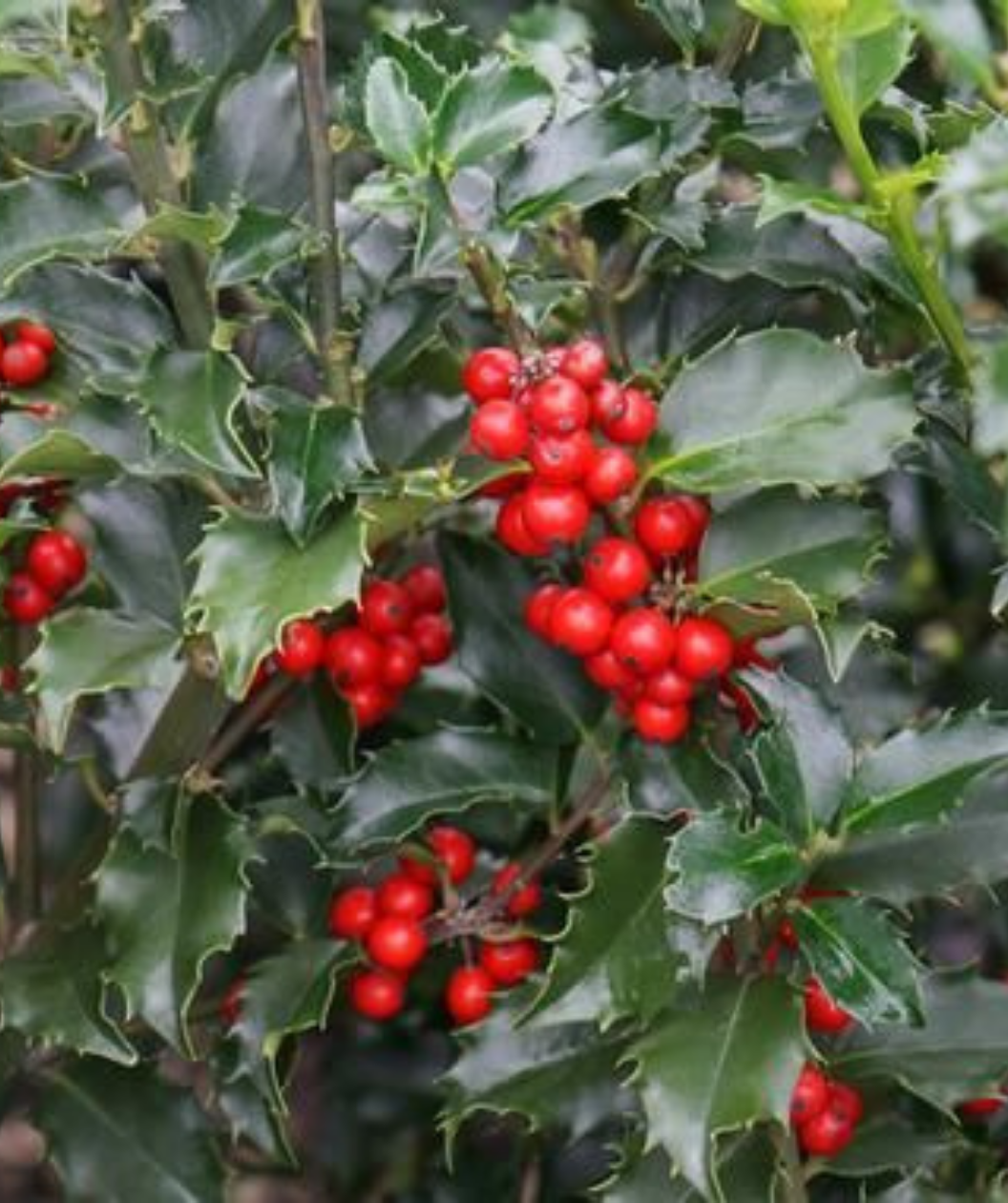



BRIGHT RED BERRIES AGAINST DARK GREEN-BLUE, GLOSSY FOLIAGE
FEATURES:
- Glossy attractive evergreen blue-green leaves on purple stems
- Beautifully rounded shape
- Perfect plant for winter interest
- Beautiful color addition to any garden
- Bright red berries are produced when the Blue Prince is near
- Hand Selected, Fresh from the Grower
- Ships in a plant-safe designed box
Growth Facts
- Hardiness Zone: 5-9
- Mature Height: 10-15' tall
- Mature Width: 8-10' wide
- Exposure: Full Sun/Part Shade
- Spacing: 8-10' apart
BRIGHT RED BERRIES AGAINST DARK GREEN-BLUE, GLOSSY FOLIAGE
FEATURES:
- Glossy attractive evergreen blue-green leaves on purple stems
- Beautifully rounded shape
- Perfect plant for winter interest
- Beautiful color addition to any garden
- Bright red berries are produced when the Blue Prince is near
- Hand Selected, Fresh from the Grower
- Ships in a plant-safe designed box
Growth Facts
- Hardiness Zone: 5-9
- Mature Height: 10-15' tall
- Mature Width: 8-10' wide
- Exposure: Full Sun/Part Shade
- Spacing: 8-10' apart
Why plant Blue Princess Meserve Holly Accent?
Introducing the Princess of Blue Meserve Holly! No, there's no fanfare playing and don't worry you won't have to take a bow, its just our favorite shrub! Spiky blue-green leaves clothe its purple stems all year long, painting a pleasing picture even during the depths of winter. Glossy red berries add to the show until songbirds carry them away. This evergreen Holly will add the Finishing Touch to your foundation plantings, providing welcome color year-round. Use it to provide structure to this high-visibility area by your front door and to anchor your home to the landscape. Blue Princess also makes an excellent hedge to serve as an elegant property divider, privacy screen, and backdrop to your flower beds.
The story of the Blue Princess Holly is a remarkable one. It began on Long Island, where an amateur gardener named Kathleen Meserve lived. Meserve had a special fondness for Hollies, but most of the Hollies available to gardeners in her day weren’t dependably cold-hardy. They were English Hollies, adapted to the mild climate of that country, not the icy winters of New York. Most gardeners would have simply given up on Hollies, but Meserve had another idea. She learned how to breed them and hybridized her own cold-hardy new varieties! She bred Blue Princess in the 1950s; it was introduced in 1973. Today it’s one of the most popular Hollies in the country.
How to use Blue Princess Meserve Holly Accent in the landscape?
Meserve Hollies are perfect for planting as a specimen plant to decorate your garden. There's nothing like dressing up your landscape with a shrub! These special plants can also be planting in containers near front porches, patios, and terraces! These bushy shrubs will make one dramatic statement on either side of your entry way! You can also plant these shrubs closer together to create one interesting looking privacy screen.
Planting Zones
Hardiness Zone: 5-9
How To Plant Blue Princess Meserve Holly Accent
These holly plants thrive in moderately moist well-draining soil. The Meserve Holly is tolerant of light shade but performs best in the full sun to catch those rays. These Holly plants attract lots of birds that will take shelter in its dense foliage.
How To Water
Water twice weekly for the first 3-5 weeks; then water weekly for the remainder of the year until winter. When you water, water very slowly and very thoroughly. The water needs to reach to the bottom of the root ball and that takes time. Watering needs may be altered due to extreme weather conditions.
How To Fertilize
Incorporate Elements Starter Plant Food granular form into the soil when planting. If planting in spring or summer start fertilizing late fall using Elements Starter Plant food granular form on an annual basis each late year. Continue this for three years to get your plant well established.
How To Prune
Pruning this plant is not a necessity. If you choose to prune your holly, it is best to prune during the spring before new growth emerges. Remove any dead and diseased branches throughout the year.




